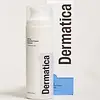What's inside
What's inside
 Key Ingredients
Key Ingredients

No key ingredients
 Benefits
Benefits

 Concerns
Concerns

 Ingredients Side-by-side
Ingredients Side-by-side

Water
Skin ConditioningC12-15 Alkyl Benzoate
AntimicrobialGlycerin
HumectantPropanediol
SolventCetyl Alcohol
EmollientMethyl Gluceth-20
HumectantNeopentyl Glycol Dicaprate
EmollientPEG-100 Stearate
Glyceryl Stearate
EmollientPolyglyceryl-4 Caprate
EmulsifyingPhenoxyethanol
PreservativeCitrus Aurantium Dulcis Oil
MaskingLimonene
PerfumingAcrylates/C10-30 Alkyl Acrylate Crosspolymer
Emulsion StabilisingCapryl/Capramidopropyl Betaine
CleansingCaprylyl Glycol
EmollientPolysorbate 20
EmulsifyingAllantoin
Skin ConditioningSodium Hydroxide
BufferingPentaerythrityl Tetra-Di-T-Butyl Hydroxyhydrocinnamate
AntioxidantDisodium EDTA
Polyquaternium-39
Sodium Chloride
MaskingPEG-30 Dipolyhydroxystearate
EmulsifyingTrideceth-6
EmulsifyingGlycolic Acid
BufferingSodium Benzoate
MaskingWater, C12-15 Alkyl Benzoate, Glycerin, Propanediol, Cetyl Alcohol, Methyl Gluceth-20, Neopentyl Glycol Dicaprate, PEG-100 Stearate, Glyceryl Stearate, Polyglyceryl-4 Caprate, Phenoxyethanol, Citrus Aurantium Dulcis Oil, Limonene, Acrylates/C10-30 Alkyl Acrylate Crosspolymer, Capryl/Capramidopropyl Betaine, Caprylyl Glycol, Polysorbate 20, Allantoin, Sodium Hydroxide, Pentaerythrityl Tetra-Di-T-Butyl Hydroxyhydrocinnamate, Disodium EDTA, Polyquaternium-39, Sodium Chloride, PEG-30 Dipolyhydroxystearate, Trideceth-6, Glycolic Acid, Sodium Benzoate
 Reviews
Reviews

Ingredients Explained
These ingredients are found in both products.
Ingredients higher up in an ingredient list are typically present in a larger amount.
Glycerin is already naturally found in your skin. It helps moisturize and protect your skin.
A study from 2016 found glycerin to be more effective as a humectant than AHAs and hyaluronic acid.
As a humectant, it helps the skin stay hydrated by pulling moisture to your skin. The low molecular weight of glycerin allows it to pull moisture into the deeper layers of your skin.
Hydrated skin improves your skin barrier; Your skin barrier helps protect against irritants and bacteria.
Glycerin has also been found to have antimicrobial and antiviral properties. Due to these properties, glycerin is often used in wound and burn treatments.
In cosmetics, glycerin is usually derived from plants such as soybean or palm. However, it can also be sourced from animals, such as tallow or animal fat.
This ingredient is organic, colorless, odorless, and non-toxic.
Glycerin is the name for this ingredient in American English. British English uses Glycerol/Glycerine.
Learn more about GlycerinPhenoxyethanol is a preservative that has germicide, antimicrobial, and aromatic properties. Studies show that phenoxyethanol can prevent microbial growth. By itself, it has a scent that is similar to that of a rose.
It's often used in formulations along with Caprylyl Glycol to preserve the shelf life of products.
Water. It's the most common cosmetic ingredient of all. You'll usually see it at the top of ingredient lists, meaning that it makes up the largest part of the product.
So why is it so popular? Water most often acts as a solvent - this means that it helps dissolve other ingredients into the formulation.
You'll also recognize water as that liquid we all need to stay alive. If you see this, drink a glass of water. Stay hydrated!
Learn more about Water